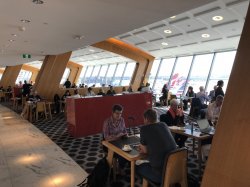- Joined
- Nov 12, 2012
- Posts
- 25,713
- Qantas
- Platinum
- Virgin
- Platinum
- Star Alliance
- Silver
Always welcome to see engineers smiling when they come on board. Should push back before 16:30.
Pilot just announced that engineers couldn't measure fuel properly. Need to order more, add it in, then put the dipstick back and have a look...
Always welcome to see engineers smiling when they come on board. Should push back before 16:30.
Struggling to use your Frequent Flyer Points?
Frequent Flyer Concierge takes the hard work out of finding award availability and redeeming your frequent flyer or credit card points for flights.
Using their expert knowledge and specialised tools, the Frequent Flyer Concierge team at Frequent Flyer Concierge will help you book a great trip that maximises the value for your points.
QF636 the 2010 mel-bne delayed tonight to an atd 2048 but made up time to arrive 21m late. No good for the “on time” arrival stats however which allow 15m...
AFF Supporters can remove this and all advertisements
jb747 previously commented that engines need to run for five minutes after landing in any case.
Announcement in the MEL QP just now - due to projected storm-related delays in SYD this evening, customers with HLO are being offered complimentary ‘fly forward’
The HKG - SYD QF128 did not depart on Wednesday 26 until 2230, 150 minutes late so SYD arrival on 27 is estimated as 0922, 147 minutes past the allotted.

Other AFFers can make atrocious puns - I'll stay clear - but what technical reason would there be why they couldn't (rather than 'did not') properly measure the fuel?
Our aviators may be able to confirm that this is a very unusual problem.
 Sample AFF with no advertisements? More..
Sample AFF with no advertisements? More..